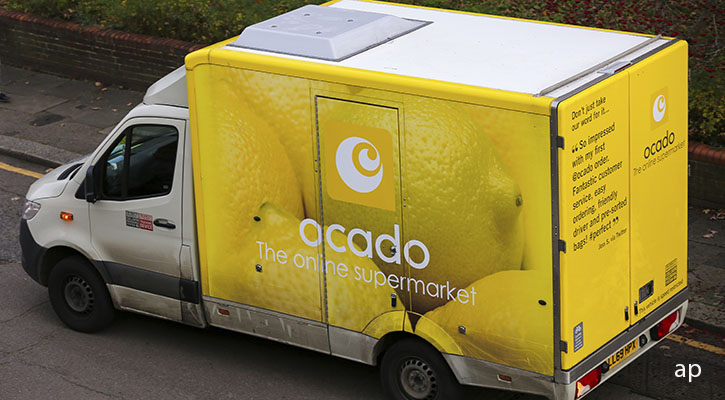
It will be years before we can fully assess the damage Covid-19 has done to the cause of gender equality. What’s clear now is that it’s a major setback. The pandemic-driven economic downturn of early 2020 was labelled a "shecession" for its disproportionate impact on industries like hospitality, tourism, and retail, in which women are overrepresented.
The United Nations (UN), meanwhile, has warned of "four lost decades" in progress toward gender-related goals, estimating global female employment declined by 54 million in 2020 as the burden of family care fell largely on women’s shoulders. In the UK, a Women and Equalities Committee report assessing the pandemic’s impact on gender equality found that ‘for many women it has made existing equality problems worse.’
No wonder, then, that for some investors, gender diversity has become a more urgent consideration. This is partly a matter of social justice. But there are also financial factors at play. Research from McKinsey, Credit Suisse, and others links gender diversity to better corporate results. The "cognitive diversity" that results from combining workers of different backgrounds improves decision making. And with women often exceeding men in educational attainment, gender diversity widens the talent pool.
Morningstar Gender Diversity indexes focus on the shares of companies committed to equal opportunity and access. The indexes incorporate 19 gender-related criteria while reflecting the broad equity market. Index analysis suggests that gender-lens investing is linked to both values and value.
How Do You Index Gender Diversity?
Lack of transparency constitutes a formidable obstacle to corporate-level gender research. According to Equileap, a specialist researcher and partner of Morningstar Indexes, just 17% of companies globally publish information on their gender pay gap, the persistent and pernicious differential between female and male salaries. Equileap praises the UK for requiring companies with more than 250 employees to report on their gap. In the US, just 8% of companies voluntarily report.
Company-level disclosure informs Equileap’s Gender Equality scores—the basis for Morningstar Gender Diversity indexes. Roughly 4,000 companies across 23 developed markets in Asia, Europe, and North America form the universe.
Good research on diversity, equity, and inclusion must go beyond numbers though. While it's important to measure representation at various levels of a company's labour force, policies, such as parental leave, are also critical to an inclusive workplace. Equileap assesses 19 criteria within four broad categories:
- Gender balance in leadership and workforce;
- Equal compensation and work-life balance;
- Policies promoting gender equality;
- Commitment, transparency, and accountability.
It’s also key to examine actual behavior, so Equileap evaluates a company's legal record when it comes to gender discrimination and sexual harassment.
The Morningstar Gender Diversity Indexes are derived from their equivalent large- and mid-cap equity benchmarks. They hold most of the same stocks as their parent indexes but tilt constituent weight so better-scoring companies are overrepresented relative to their market capitalisation, while poor scorers receive below-market weight. Companies involved in gender-related legal proceedings are excluded.
Global Gender Leaders
So which are the companies that score well for gender diversity, and receive above-market weight in Morningstar’s Gender Diversity Index?
National Grid, the British utility, is one of the best scoring companies globally on gender equality. According to Equileap, it is one of just 19 companies globally that have no gender pay gap. On the representation side, National Grid has achieved gender balance within its board and its executive ranks. The company has strong gender-related policies, pays living wages, and offers generous parental leave.
Intuit, the US provider of accounting software, can claim gender diversity within its executive ranks and has instituted policies on abuse, equality of opportunity, and whistleblowing, while promoting career development. It also pays attention to gender diversity within its supply chain. Intuit receives partial credit for the size of its pay gap and parental leave.
Takeda Pharmaceuticals stands out within corporate Japan for gender diversity within its executive ranks, management level, and workforce overall. The healthcare business offers parental leave and flexible work and maintains strong policies on training, abuse, whistleblowing, and diversity within the supply chain.
Aena, an airport operator, is one of many high-scoring companies from Spain. It introduced new reporting requirements between 2019 and 2021 to combat gender discrimination, and scores well for gender diversity within its executive and managerial levels and for its policies, including generous parental leave and flexible work.
Mitigating Risk
What can we learn by analysing Morningstar Gender Diversity indexes’ composition and behaviour as of the first quarter of 2022? From a sector perspective, they devote above-market weight to:
- Utilities;
- Consumer Defensives;
- Energy.
Meanwhile, the indexes tend to devote below market weight to:
- Technology;
- Basic Materials;
- Industrials.
According to Equileap, utilities tend to score well for gender diversity at the board level, for training and career development, and inclusive recruitment. Meanwhile, the technology sector struggles with female representation and has a history of sexual harassment.
Regionally, the indexes are tightly constrained in their deviation from market weight. But most of Equileap’s top scoring markets are European, including France, Spain, Sweden, and the UK. Australia is also a leader, in large part due to strong gender equality legislation, though the state does not mandate paid parental leave.
The US, Hong Kong, and Japan are the lowest-scoring markets, meanwhile. According to Equileap’s 2022 Gender Equality Global Report & Ranking, fewer than 10% of companies in those three markets report on their gender pay gaps, compared to 92% in Spain, the global leader. Gender diversity within Japanese companies is the lowest of the developed markets.
What about returns? The Morningstar Gender Diversity indexes do not have long histories. Their returns thus far look similar to the market, which is by design. Inevitably, the indexes will slightly outperform the market in some conditions and lag in others.
Interestingly, the gender diversity indexes have been less volatile than their broad equity market equivalents so far. During down markets, they have generally lost less. This stems from their preference for companies with economic moats, or sustainable competitive advantages, and businesses with strong financial health characteristics, as indicated by the Morningstar Risk Model. These attributes tend to be more stable than relative returns over time. So, results are encouraging.
Gender diversity, like many of the criteria falling into the environmental, social, and governance investing framework, goes beyond making the world a better place. Companies that create inclusive cultures are tapping into the labour force’s full talent pool while benefitting from cognitive diversity. They are not only advancing the cause of human rights but could also be maximising shareholder value.










%20(1).jpg)


















